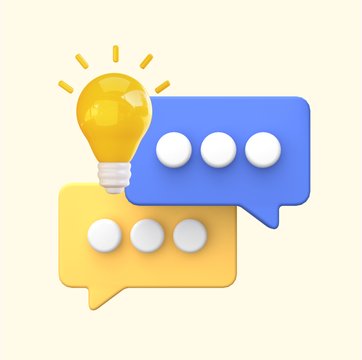11 Best Tips for Effective Communication with Customers

Table of contents
Good customer service starts with effective communication. When a customer gets in touch with your business, they want clear answers and a smooth interaction.
This isn’t just about having the right information; it’s also about delivering it in the right way. Each chat, call, or email is an opportunity to show a customer they’re valued.
For anyone working with customers, whether you’re a business owner, a manager, or a support team member, it’s essential to get this right every time.
In this blog, we’re going to share 11 practical tips that can make your customer interactions smoother and more effective. These ideas can help you build better relationships, earn trust, and keep your customers happy.
Table of Contents
- What is Customer Communication?
- Importance of Effective Customer Communication
- 11 Best Tips for Effective Customer Communication
What is Customer Communication?
Customer communication refers to the interactions between a business and its customers, through various channels and methods. The primary aim is to inform, address concerns, build relationships, and boost customer satisfaction. It encompasses both the messages a business delivers and the feedback it receives from its customers.
7 Best Customer Communication Management Software
Importance of Effective Customer Communication
Effective customer communication is of paramount importance for businesses in today’s dynamic marketplace. Here’s why:
- Builds Trust: Transparent and honest communication fosters trust. When customers feel they can rely on consistent and truthful information from a business, they’re more likely to remain loyal.
- Facilitates Feedback: Two-way communication allows businesses to gather valuable feedback. By understanding customers’ perspectives and needs, businesses can make necessary adjustments to their products, services, or strategies.
- Reduces Confusion: Clear communication minimizes misunderstandings, ensuring customers have the right expectations. This can reduce potential complaints or dissatisfaction down the line.
- Promotes Better Engagement: Engaging content and personalized communication strategies can turn passive customers into active brand advocates, amplifying positive word-of-mouth and referrals.
- Mitigates Crises: In times of issues or controversies, effective communication is crucial. Addressing concerns head-on and providing timely updates can prevent potential PR disasters.
- Differentiates the Brand: In a crowded market, the way a brand communicates can set it apart. A unique voice, proactive customer service, and open dialogue can be powerful differentiators.
11 Best Tips for Effective Customer Communication
Here’s a list of the 11 best tips that can enhance customer communication.
Tip 1: Active Listening
Active listening involves fully concentrating, understanding, and responding to what the customer says, without getting sidetracked by personal judgment or distractions. Active listening is more than hearing words; it’s understanding the emotions and needs behind them.
Why it’s Essential in Customer Service:
- Trust Building: Demonstrates to customers that their concerns genuinely matter.
- Avoids Misunderstandings: Ensures accurate grasp of the issue at hand.
- Encourages Empathy: Shows customers you truly care about their sentiments and problems.
Implementing Active Listening:
- Give Full Attention: This can be eye contact in face-to-face interactions or focusing solely on the call/chat in virtual communication.
- Hold Off on Interrupting: Let the customer express themselves completely. Only then, formulate a response.
- Feedback and Clarification: Use words like “I see” or ask questions like “So, you mean…?” to ensure you’ve grasped their point.
- Paraphrasing: Echo back the main issue to confirm understanding.
- Stay Calm and Composed: Regardless of the customer’s emotions, keep your demeanor understanding and patient.
- Note-taking: For complex matters, jotting down points can aid in problem-solving and show you’re taking them seriously.
Tip 2: Clear and Concise Communication
This means expressing ideas and giving information in a straightforward manner without using unnecessary words or jargon. It’s about being both clear (easy to understand) and concise (getting straight to the point).
Why it’s Essential in Customer Service:
- Avoids Confusion: Customers can easily grasp what you’re saying without room for misinterpretation.
- Saves Time: Both for you and the customer, leading to quicker problem resolution.
- Enhances Professionalism: Clear communication portrays confidence and knowledge.
Strategies for Clear and Concise Communication:
- Avoid Jargon: Use simple language, especially when dealing with non-technical customers.
- Be Direct: Address the main point quickly. Avoid beating around the bush.
- Use Bullet Points or Lists: When explaining multiple points or steps, lists can help in breaking down information.
- Ask for Feedback: After explaining, ask customers if they understood or if they need further clarification.
- Use Analogies or Examples: Sometimes, relating a complex topic to something familiar can aid understanding.
- Active Voice Over Passive: For example, “We will process your refund” is clearer than “Your refund will be processed.”
Tip 3: Empathy and Understanding
Empathy involves recognizing and understanding another person’s emotions and feelings. In customer service, it’s the genuine effort to see things from the customer’s perspective and address their concerns with kindness and compassion.
Why it’s Essential in Customer Service:
- Builds Connection: Customers feel valued and understood, enhancing their loyalty and trust.
- Eases Tensions: Displaying empathy can calm frustrated or upset customers.
- Encourages Open Communication: When customers feel they’re being understood, they’re likely to share more information, leading to effective problem-solving.
Ways to Show Empathy and Understanding:
- Use Affirmative Phrases: Such as “I understand how you feel,” “That must be frustrating,” or “I’m truly sorry for the inconvenience.”
- Listen Without Judging: Let customers express without interrupting, and avoid making assumptions.
- Reflect Emotions: If a customer says they’re disappointed, respond with, “I can see why you’d feel disappointed about that.”
- Offer Genuine Solutions: Once you understand the problem, provide a solution that really addresses their concerns.
- Follow-up: After an issue has been addressed, checking in later shows you genuinely care about their satisfaction.
11 Soft Skills to Enhance Customer Retention
Tip 4: Use Positive Language and Tone
Positive language involves focusing on solutions and affirmative actions rather than problems. It emphasizes what can be done, instead of what cannot. The tone, on the other hand, is the emotional undertone behind the words chosen.
Why it’s Essential in Customer Service:
- Sets a Positive Atmosphere: It encourages collaboration and understanding between the representative and the customer.
- Reduces Frustration: Positive language can de-escalate potential conflicts and soothe upset customers.
- Promotes Clarity: By focusing on solutions, it reduces ambiguity and guides the conversation toward resolution.
Ways to Adopt Positive Language and Tone:
- Focus on Solutions: Instead of saying “We don’t have that product,” say “I can help you find an alternative.”
- Avoid Negative Phrases: Swap out “I don’t know” with “Let me find out for you.”
- Pay Attention to Your Tone: Ensure your tone, whether in voice or written form, is consistent with your message. A positive message with a negative tone can be counterproductive.
- Use “We” Language: This promotes unity. For instance, “Let’s see how we can solve this together.”
Tip 5: Ask the Right Questions
Asking questions isn’t just about getting information; it’s about understanding the customer’s concerns deeply. The right questions can help provide clarity, and lead to effective problem-solving.
Why it’s Essential in Customer Service:
- Gathers Relevant Information: Helps in understanding the complete picture.
- Builds Rapport: Shows customers that you’re genuinely interested in helping them.
- Prevents Misunderstandings: Gets to the root of the issue more efficiently.
How to Frame the Right Questions:
- Open-ended Questions: Begin with words like “how,” “why,” or “what.” E.g., “How did that make you feel?”
- Clarifying Questions: These help in ensuring you’ve understood correctly. For instance, “So you’re saying that…?”
- Probing Questions: Dig deeper into issues, like “Can you tell me more about the issue you faced during checkout?”
- Reflective Questions: Echo back what the customer said to confirm understanding, “You mentioned you had trouble with X, right?”
- Close-ended Questions: Useful for confirming specifics, e.g., “Did this happen before or after updating the app?”
Tip 6: Adaptability and Flexibility
Adaptability involves adjusting one’s approach based on the unique needs and emotions of each customer. It’s the ability to think on your feet and modify your methods according to the situation at hand.
Why it’s Essential in Customer Service:
- Addresses Individual Needs: No two customers are the same. Tailoring your approach ensures every customer’s unique needs are met.
- Enhances Problem-Solving: Being flexible allows you to find alternative solutions when standard procedures don’t work.
- Builds Stronger Relationships: Customers appreciate when they feel you’re going the extra mile to assist them.
Ways to Showcase Adaptability and Flexibility:
- Understand the Customer’s Profile: Are they tech-savvy? Are they frustrated or calm? Adjust your explanations and solutions accordingly.
- Think Outside the Box: If standard solutions don’t work, brainstorm alternative routes to address the customer’s concern.
- Manage Emotions: Sometimes, you’ll encounter heated situations. Staying calm and adapting your responses to soothe the customer is crucial.
- Know When to Escalate: Recognize when a situation is beyond your control or expertise and needs escalation.
Tip 7: Timely Response and Follow-Up
In the world of customer service, time is of the essence. Responding to customers promptly and ensuring timely follow-up not only addresses their issues faster but also shows that you value their time and effort.
Why it’s Essential in Customer Service:
- Shows Respect for Customer’s Time: A swift response indicates you prioritize their concerns.
- Prevents Escalation: Addressing issues in a timely manner can prevent them from becoming larger problems.
- Enhances Brand Image: A company that’s prompt in its responses is seen as reliable.
How to Ensure Timely Responses and Follow-Up:
- Set Clear Timeframes: If you can’t provide an immediate solution, give a clear timeframe for when they can expect one.
- Use Automated Responses with Care: While automated responses can inform the customer their query was received, ensure a human agent follows up soon after.
- Prioritize Issues: Triage customer queries so that more urgent matters are addressed first.
- Schedule Follow-Ups: Whether it’s to confirm if a solution was effective or to provide an update, a follow-up can make a difference.
- Leverage Technology: Use CRM systems or ticketing tools to track, remind, and ensure no customer query falls through the cracks.
Tip 8: Utilize Constructive Feedback
Constructive feedback, whether it comes from customers or internally from peers, is a valuable resource. It provides insights into areas of improvement, helping refine service strategies and approaches.
Why it’s Essential in Customer Service:
- Continuous Improvement: Feedback helps identify gaps in service delivery and provides opportunities for enhancement.
- Customer-Centric Approach: Feedback ensures services are aligned with customers’ evolving needs and expectations.
- Empowerment: Armed with feedback, customer service representatives can proactively address recurrent issues.
How to Harness Constructive Feedback:
- Open Channels for Feedback: Make it easy for customers to share feedback—be it through surveys, feedback forms, or open discussions.
- Acknowledge Feedback Received: Whether it’s positive or negative, always acknowledge feedback to let customers know they’ve been heard.
- Analyze and Categorize: Systematically categorize feedback to pinpoint common issues or areas of concern.
- Take Action: Implement necessary changes based on feedback, and monitor outcomes.
- Share Feedback Internally: Ensure that customer feedback is shared within the organization. Celebrate positive feedback and brainstorm solutions to challenges.
Tip 9: Cultivate Cultural Sensitivity and Awareness
In today’s globalized world, customer service representatives often interact with individuals from diverse cultural backgrounds. Being culturally sensitive means recognizing, respecting, and being aware of the differences and similarities within and between different customer groups or segments.
Why it’s Essential in Customer Service:
- Broadens Customer Reach: Recognizing cultural nuances can make a brand more appealing to a global audience.
- Avoids Misunderstandings: Being aware of cultural differences reduces the risk of unintentional misinterpretations.
- Enhances Customer Relationships: It shows customers that the company values and respects their unique backgrounds and perspectives.
Ways to Foster Cultural Sensitivity:
- Educate and Train: Provide customer service teams with training on cultural differences and communication nuances.
- Research Customer Demographics: Understand where most of your customers are coming from and familiarize yourself with those cultures.
- Use Neutral Language: Avoid jargon, slang, or colloquialisms that may not be universally understood.
- Be Mindful of Non-Verbal Cues: In some cultures, gestures, eye contact, or even the tone of voice can have different meanings.
- Ask When in Doubt: If unsure about a cultural preference, it’s respectful to ask the customer directly.
Tip 10: Set Clear Boundaries and Expectations
While it’s essential to go above and beyond for customers, it’s equally crucial to set clear boundaries and expectations. This ensures that both the customer and the representative have a shared understanding of what can and cannot be achieved in a given interaction.
Why it’s Essential in Customer Service:
- Prevents Misunderstandings: Clear communication about what is possible avoids false hopes or misunderstandings.
- Ensures Feasibility: Representatives can confidently promise outcomes they know are achievable, building trust.
- Protects Employee Well-being: Setting boundaries ensures that representatives are not overwhelmed or burdened with unrealistic demands.
Ways to Establish Boundaries and Expectations:
- Transparent Communication: Be upfront about any limitations, whether they relate to product availability, service scope, or resolution timeframes.
- Use Specific Language: Avoid vague commitments. Instead, use specific terms like “Your issue will be resolved within 24 hours” rather than “We’ll handle it soon.”
- Educate Customers: Provide information about processes, terms of service, or product usage to set clear expectations.
- Empower Representatives: Ensure that your support staff have the autonomy and backing to set and communicate boundaries when necessary.
- Consistent Messaging: Ensure that the entire team conveys the same boundaries and expectations – when interacting with customers – to avoid confusion.
Tip 11: Optimize for Multi-Channel Support
Multichannel support refers to offering customer service across multiple platforms or channels, such as email, phone, live chat, social media, and more. In today’s digital age, customers interact with brands across various touchpoints, expecting consistent and efficient support everywhere.
Why it’s Essential in Customer Service:
- Meets Diverse Preferences: Different customers have different channel preferences. Offering multichannel support ensures you cater to all of them.
- Increases Accessibility: Customers can reach out through their most convenient channel, improving their overall experience.
- Enhances Brand Image: Providing consistent support across all channels showcases a brand’s commitment to customer satisfaction.
Ways to Optimize Multichannel Support:
- Unified Database: Ensure all customer interactions across channels are stored in a unified system. This allows representatives to have a holistic view of customer history, regardless of the communication platform.
- Channel-specific Training: Equip your team with training tailored to the nuances of each channel. For example, handling a query on Twitter might be different from a phone call.
- Consistent Brand Voice: Ensure that communication remains consistent in tone, style, and quality across all channels.
- Monitor and Analyze: Regularly track the performance of each channel. Identify which ones are most preferred by customers and which ones might need improvement.
Elevating Customer Communication with Hiver
To wrap things up, good communication practices form the base of great customer service. But having the right tools, like Hiver, can make implementing these practices even easier.
Hiver is a multi-channel helpdesk that helps teams handle multiple communication channels – email, live chat, voice, WhatsApp, and knowledge base. It helps cut down response time and makes communication more consistent. So, while our tips provide the direction, Hiver can be the tool that helps you put them into action effectively.

































